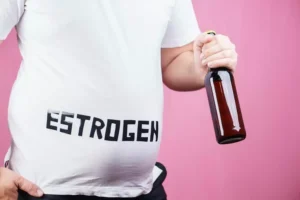
They emphasize overall wellness, including physical health, mental well-being, and spiritual growth. This might involve nutritional counseling, exercise programs, or even art therapy. It’s about rebuilding a fulfilling life beyond addiction, not just eliminating drug use. Contingency management https://ecosoberhouse.com/ interventions, on the other hand, use positive reinforcement to encourage abstinence. It’s a bit like a reward system for recovery – individuals earn vouchers or prizes for negative drug tests. This approach taps into the brain’s reward system, redirecting it towards healthy behaviors.
- For instance, some studies used standardized scales whereas other studies used Visual Analogue Scales (VAS), or non-standardized questionnaires, some with unclear psychometrical properties.
- Clinical trials in patients with DSM-IV cocaine dependence suggest that CBT is efficacious compared with more standard psychosocial treatments.
- Call our experienced team today, and let’s work together to overcome cocaine addiction and rebuild your life.
- Recovered provides a directory of treatment options that can be used to treat cocaine dependence and provide relapse prevention strategies.
- As a result, about 70% of respondents felt unprepared to answer patient questions about medical cannabis.
Crack Cocaine
The results of these studies have been the subject of several excellent systematic reviews and meta-analyses.16–19 In this review article, we provide a clinically relevant overview of the current literature on CUD. We first summarize the clinical epidemiology of CUD and then follow with an overview of the neurobehavioral consequences of short- and long-term cocaine use. We then summarize the current pharmacological and behavioral treatment approaches for CUD, and discuss emerging treatment approaches.
Substance Use Disorder
The subjects were randomized to receive either 12-week CBT plus topiramate staring at 25 mg daily and rapidly titrated over 3 weeks to 200 mg daily or 12-week CBT only. Secondary outcomes included medication adherence, safety, cocaine and other substance use, health, social functioning, and patient satisfaction. In the intent-to-treat analyses, topiramate neither improved treatment retention nor reduced cocaine and other substance use (66). The a priori hypothesis was that no treatment category would have a significant association with objective cocaine use. However, the positive association between contingency management treatment approaches and a significant reduction in objective cocaine use was not entirely unexpected.

Cocaine Addiction Treatment and Rehab Programs
At various stages in the judicial process, the justice system can divert people to treatment and services in the community instead of incarcerating them. To help adopt and implement such measures, ICATI promotes and supports all phases of national and regional planning, training, technical assistance, evaluation, and implementation; identifies, develops, and provides resources; and helps establish international networks. A 2015 SR of 24 trials found no difference between dopamine agonists and placebo on retention (moderate SOE), abstinence (low SOE), and a lack of evidence on AEs.6 We identified no additional trials of examining dopamine agonists for cocaine use disorder. In brief, predictive mean matching uses linear regression with all observed data from all variables to build a predictor matrix.
Characteristics and main findings of the studies included in the systematic review–Antidepressants. A total of 84 studies evaluated both craving and cocaine use as outcomes, 76% of them (64) presented a direct correlation between craving and cocaine use after the treatment. Combined, the studies included had 8137 participants; the smallest study had eight participants, whereas the largest had 358 participants. Men comprised the majority (75%) of the sample and 21 studies had only male participants. Two authors, D.L.S.L. and J.M.C.M., read all the 130 included studies independently. Disagreements between the two authors were resolved by discussion and consensus.

Pharmacological Treatments for Cocaine Craving: What Is the Way Forward? A Systematic Review
- The opposite has occurred because we removed any consequences for those who fail to pursue the help they need.
- However, there are several behavioral therapies that can help you or a loved one get on a path of recovery.2 Treatment of cocaine addiction can be done in a variety of settings and at various intensity levels.
- In this trial, neither topiramate nor CM was effective in reducing cocaine use.
There are many reasons why, despite numerous studies, no medications have been approved for CUD. These include methodological issues, small sample sizes leading to underpowered studies, high drop-out rates, and heterogeneity of both study design and sample population. The development of novel and efficacious treatments for CUD has been an area of intense research over the past 3 decades.

Helping someone in cocaine recovery

The study included individuals with opioid, stimulant, or polysubstance use disorder as well as controls and compared individual differences in brain activation as measured by MRI while participants were conducting three different tasks. The study is still ongoing, but there is preliminary evidence that brain areas activated by specific tasks can be correlated with characteristics determined in addictions neuroclinical assessments, such as emotion-related impulsivity, cognitive difficulties in daily life, or inattention. Dr. Clarke also introduced several large programs that cocaine addiction treatment NIDA supports — partly together with other NIH Institutes — to address the opioid public health crisis. One of these efforts is the Helping to End Addiction Long-term® Initiative, or NIH HEAL Initiative® — an NIH-wide effort to speed scientific solutions to the opioid health crisis that is jointly led by NIDA and the National Institute on Neurological Disorders and Stroke. Nineteen trials53–71 examined the effects of other drugs or drug combinations for cocaine use disorder (Table (Table2).2). Study selection was guided by an analytic framework (Online Appendix Figure 1).
Cocaine Addiction Treatment and Levels of Care
In this case, the process involved 23 experts with different areas of expertise, who identified six core competencies to guide development of medical school curricula in the United States and Canada. This breakout session was chaired by Dr. Gregory Bunt from the International Society of Addiction Medicine (ISAM), who introduced the International Consortium for Alternatives to Incarceration (ICATI). ICATI works with countries, organizations, professionals, and program sites to support the global development of treatment, care, and accountability as alternatives to incarceration for individuals who use drugs and become involved with the justice system.

- Original pharmacological studies including persons with cocaine abuse or dependence were included in this review if craving was a treatment outcome.
- And it has allowed those desperate to support drug habits to steal up to $950, every day — even multiple times per day — without facing any real consequences.
- Studies administering olanzapine [65,67,68,72], quetiapine [76] and risperidone [65,69,74] did not find evidence of craving suppression effects either.
- As a result, many universities now integrate alcohol, tobacco, and other drug content into their curricula, often within many specialty areas; however, cannabis and medical marijuana remain a new curriculum topic.
- It’s the first step on the path to reclaiming your life from the grip of addiction.
- Cocaine withdrawal is commonly experienced by those who become dependent on this drug.
